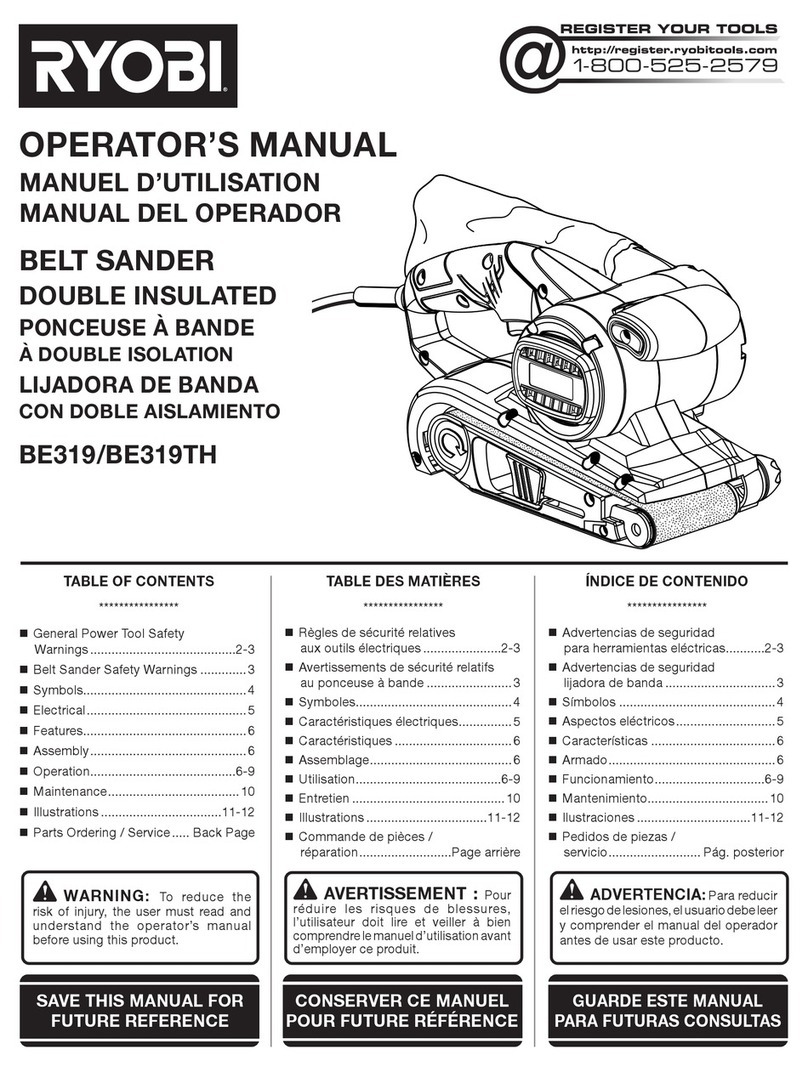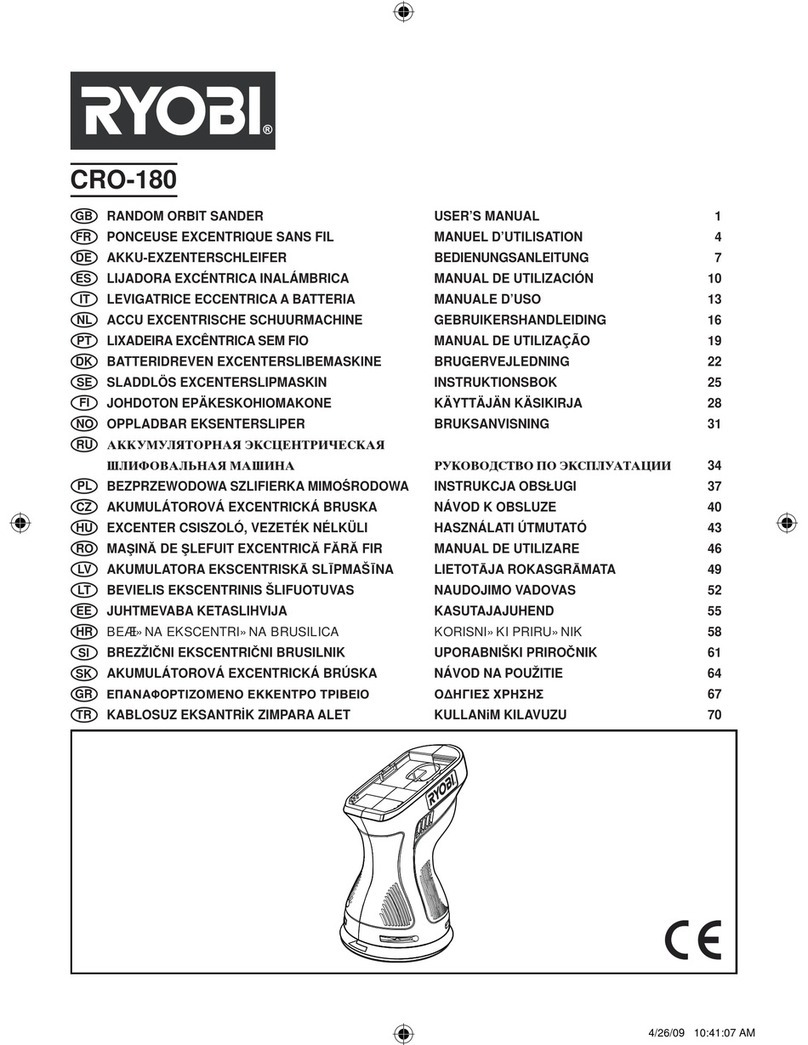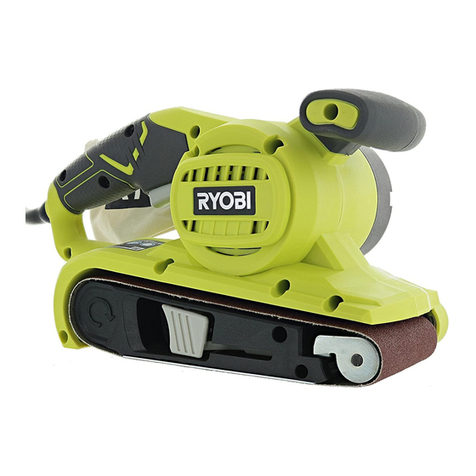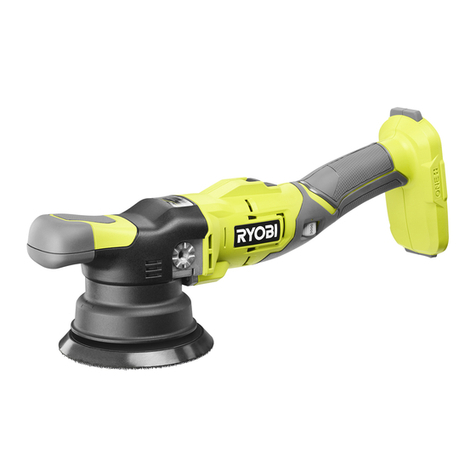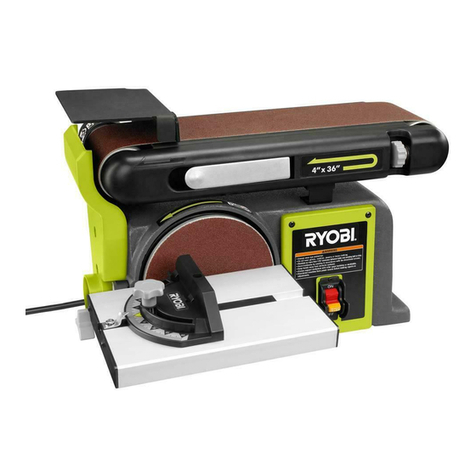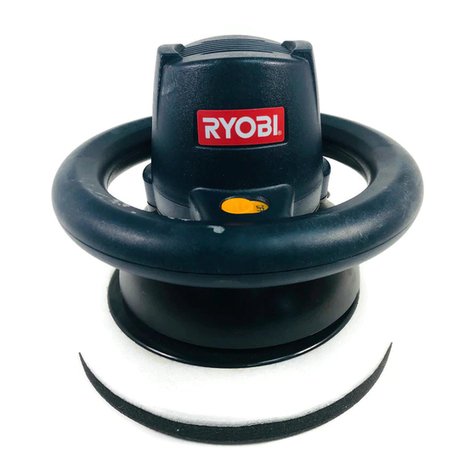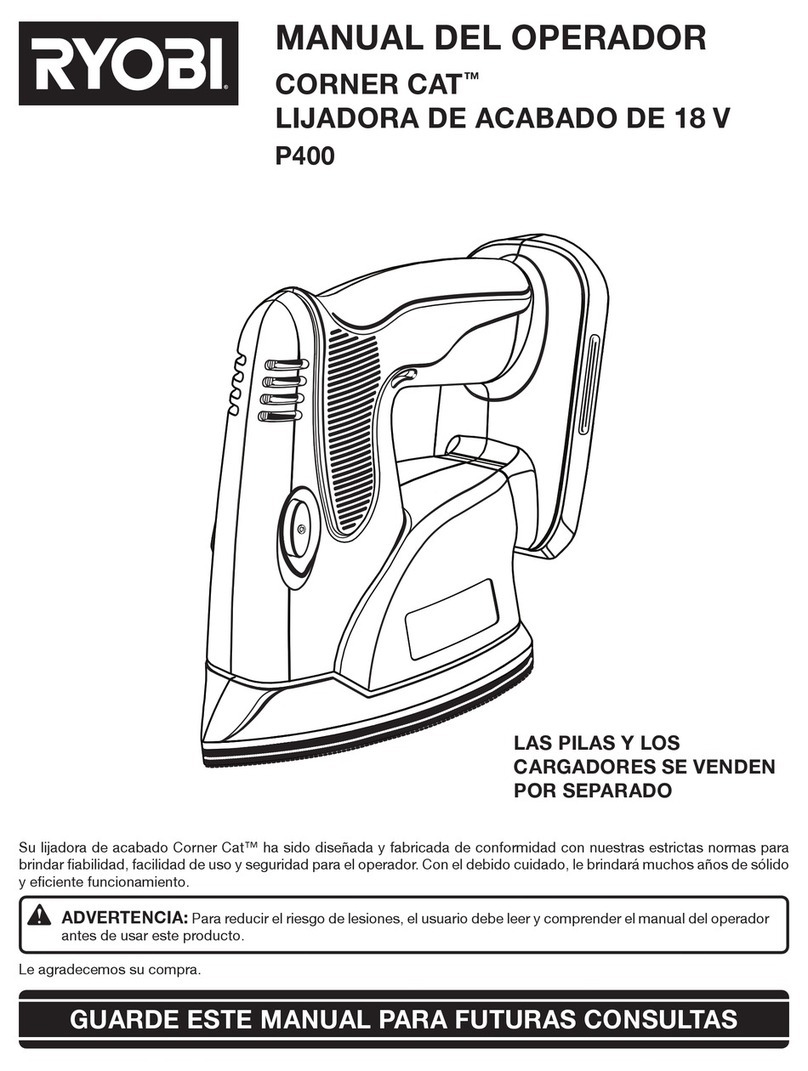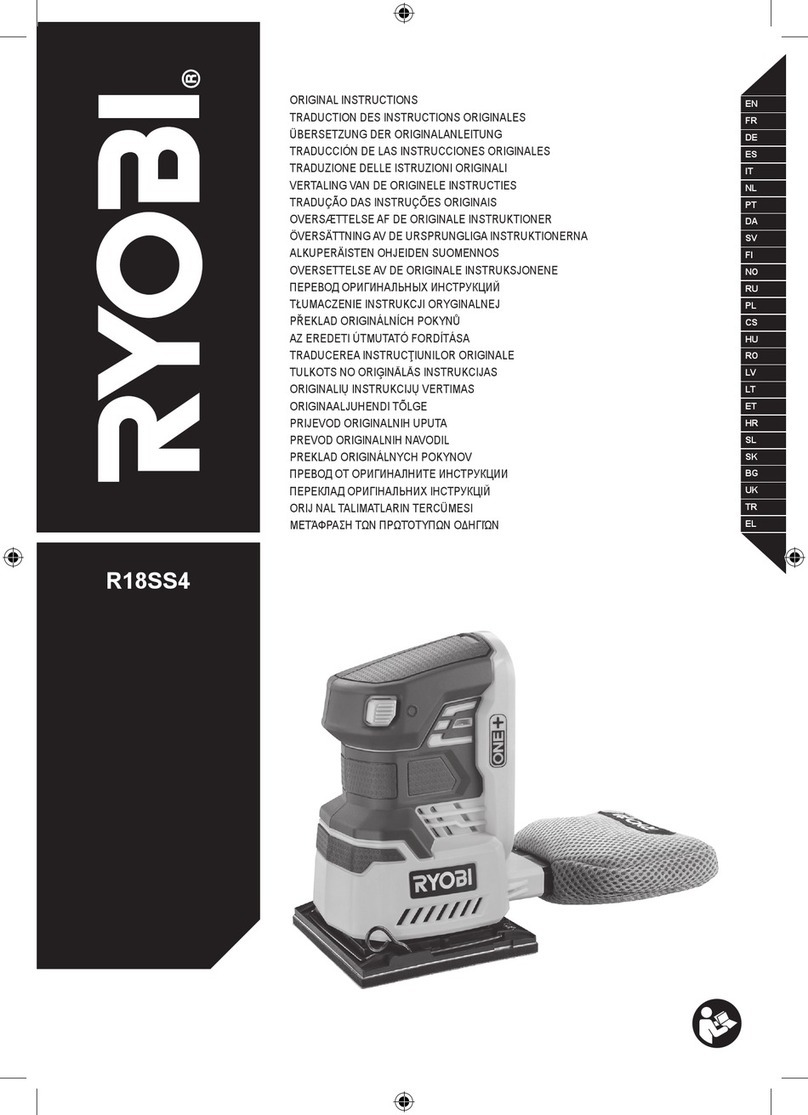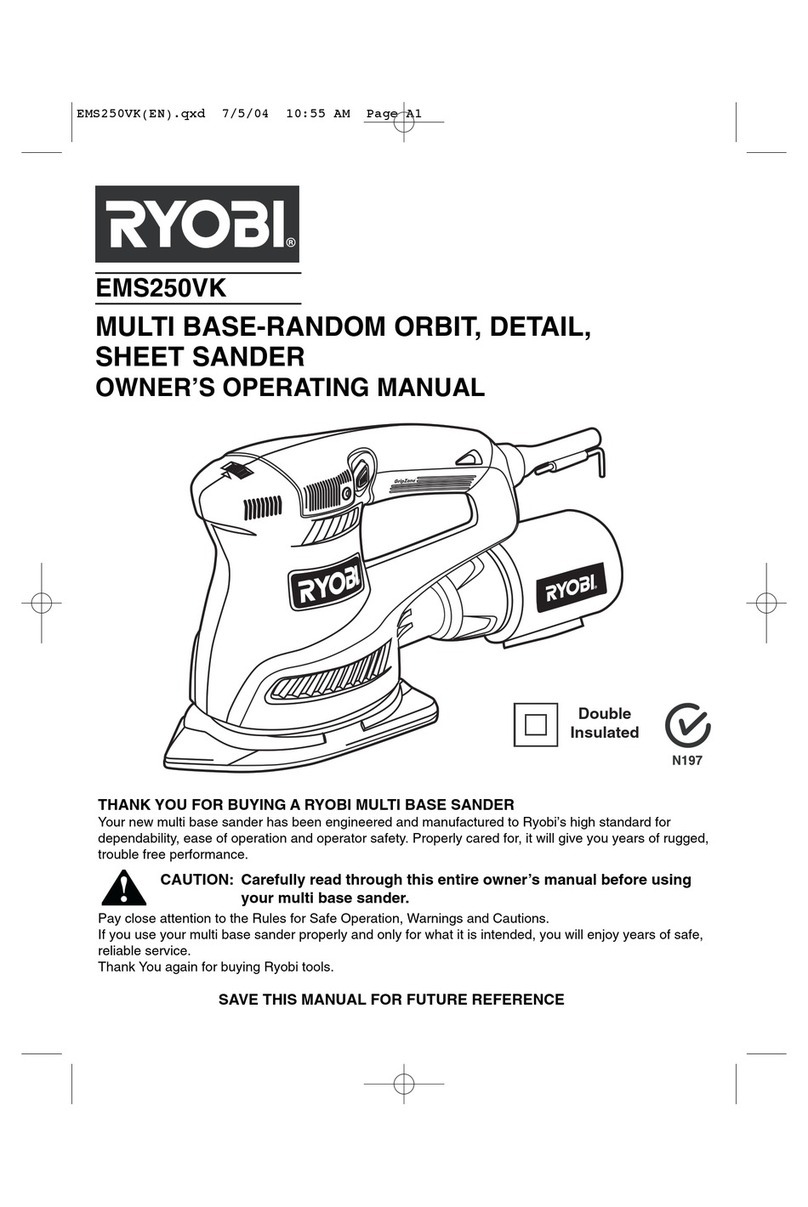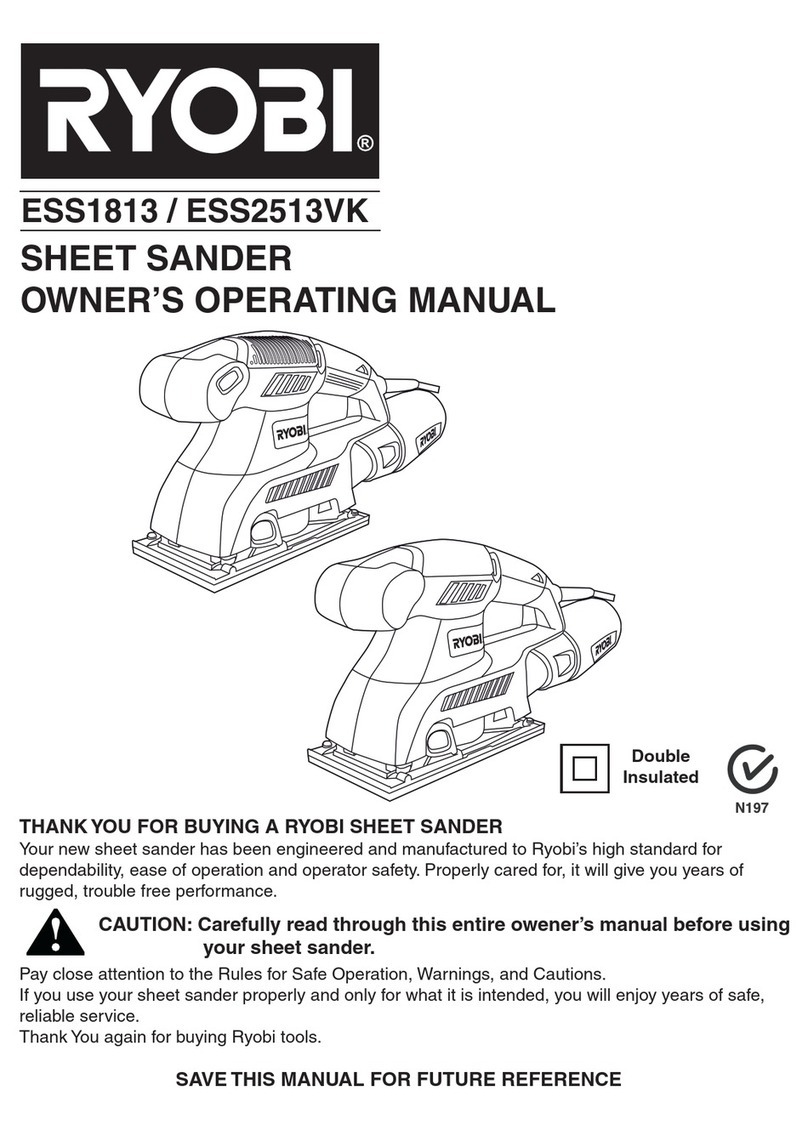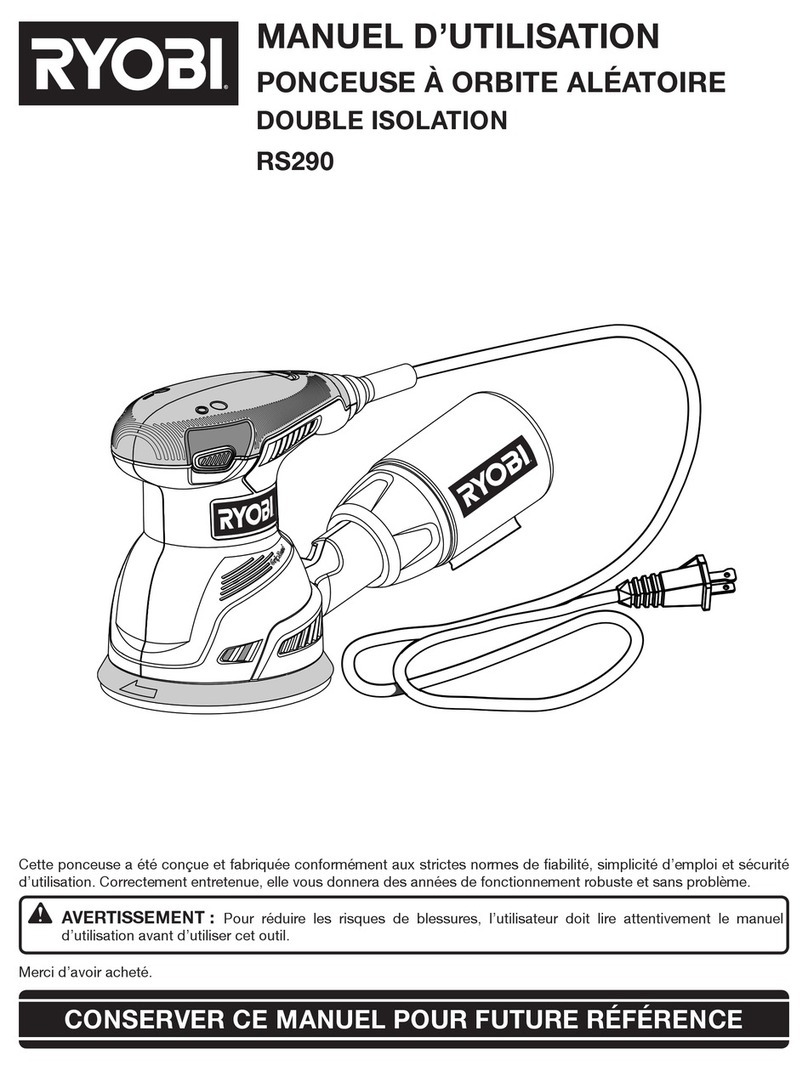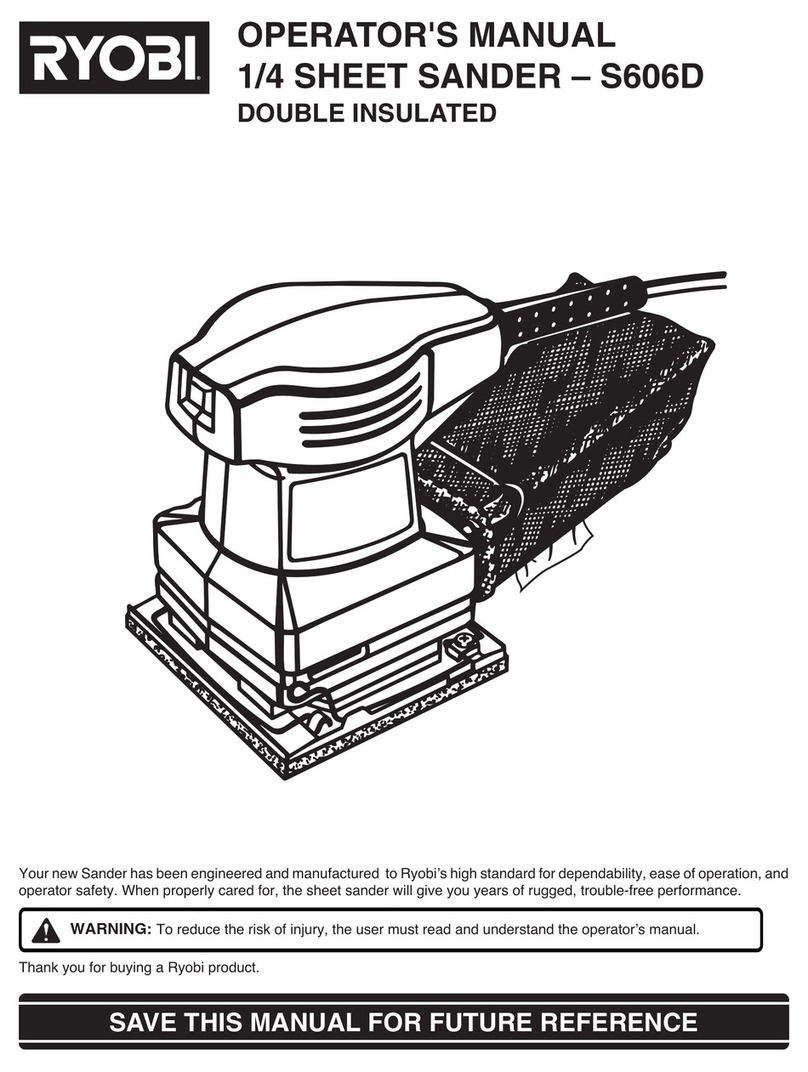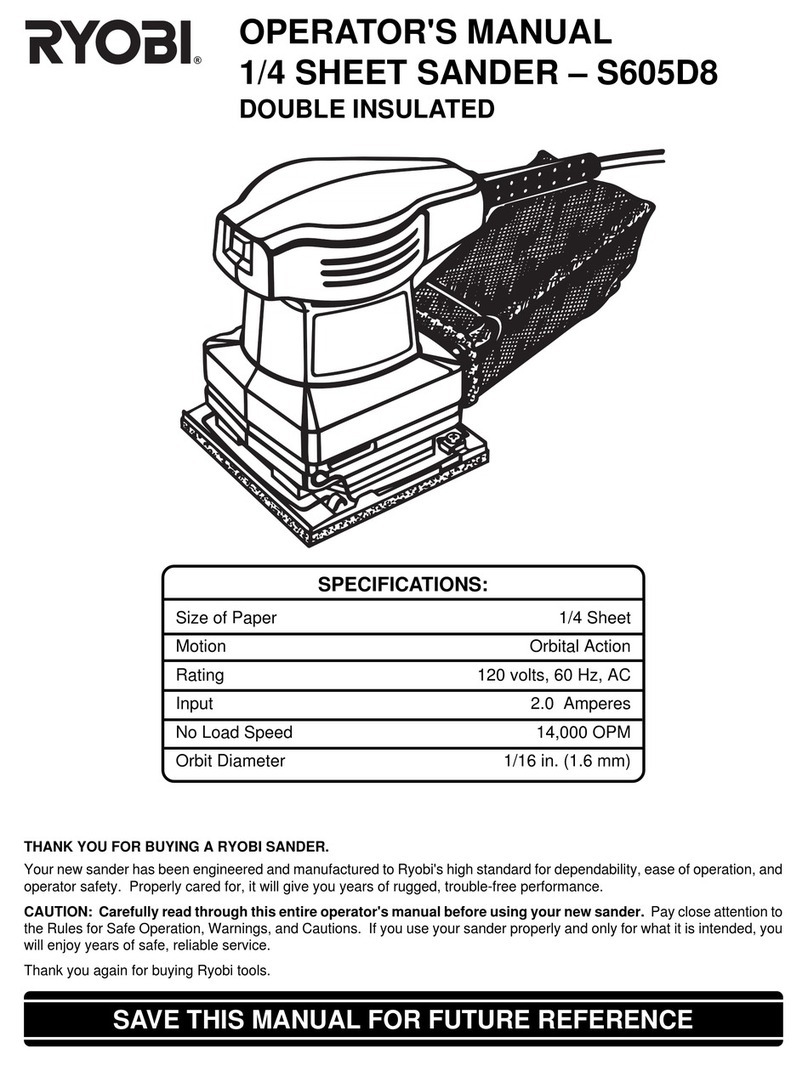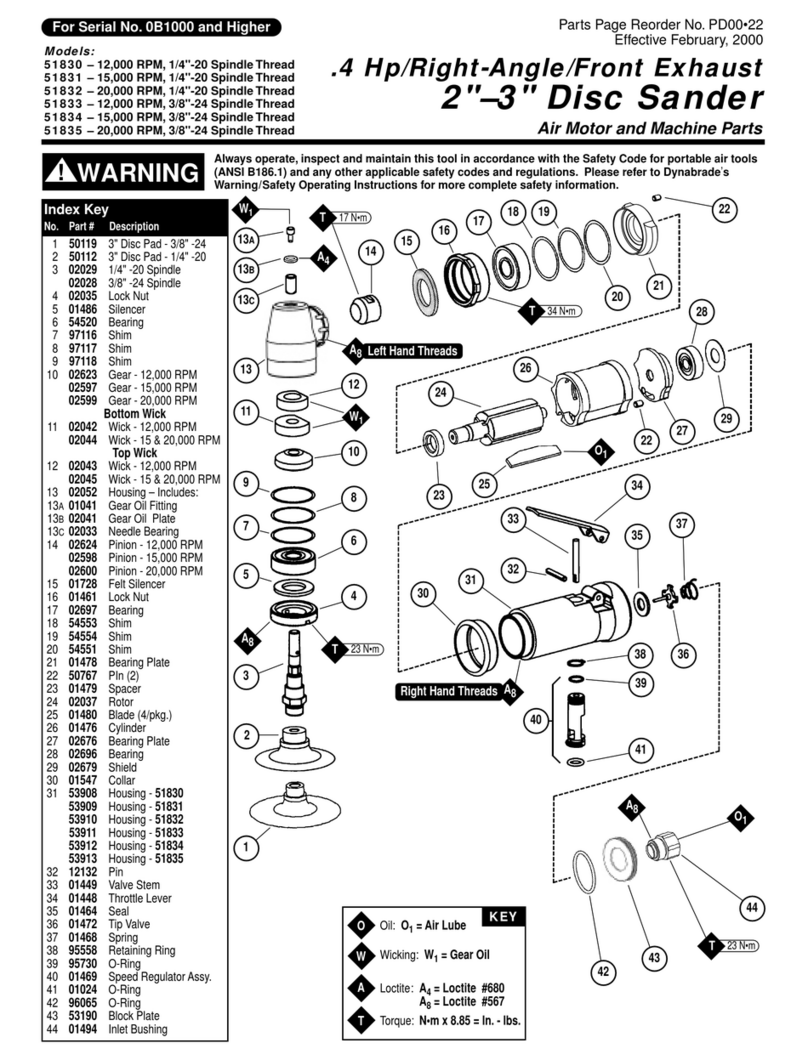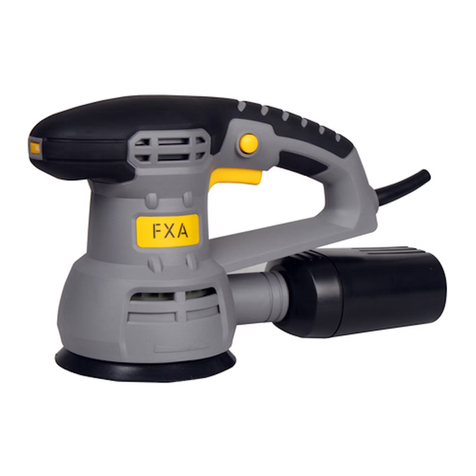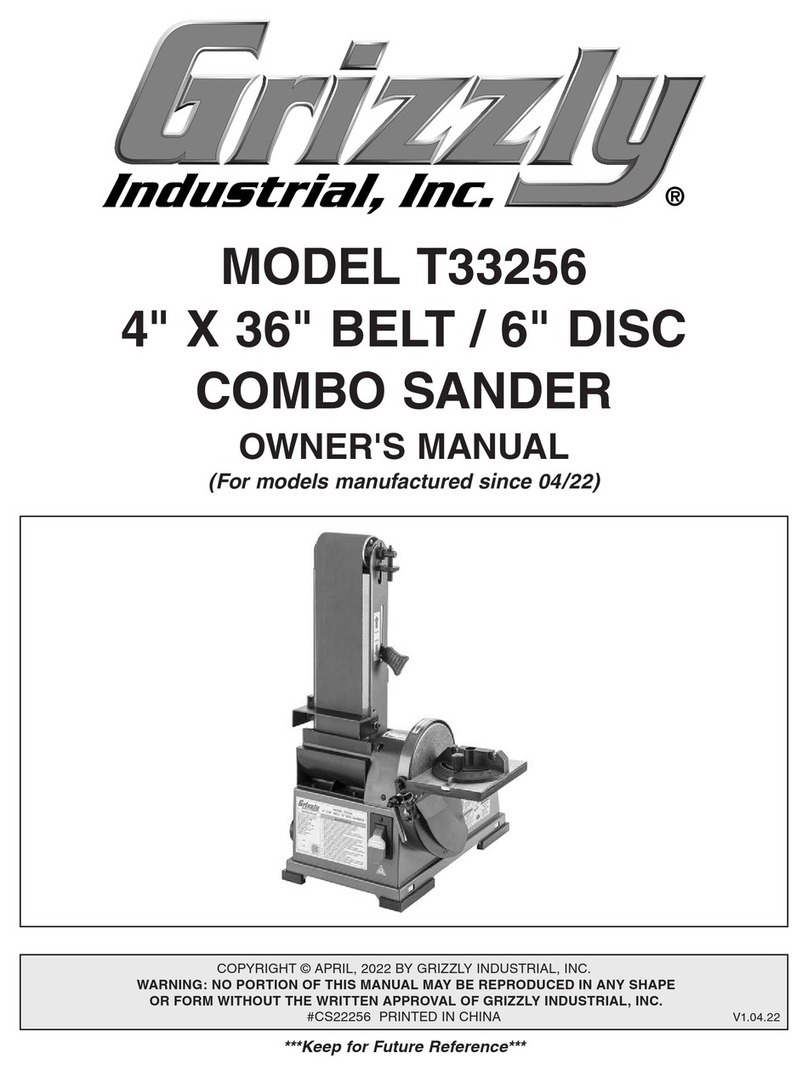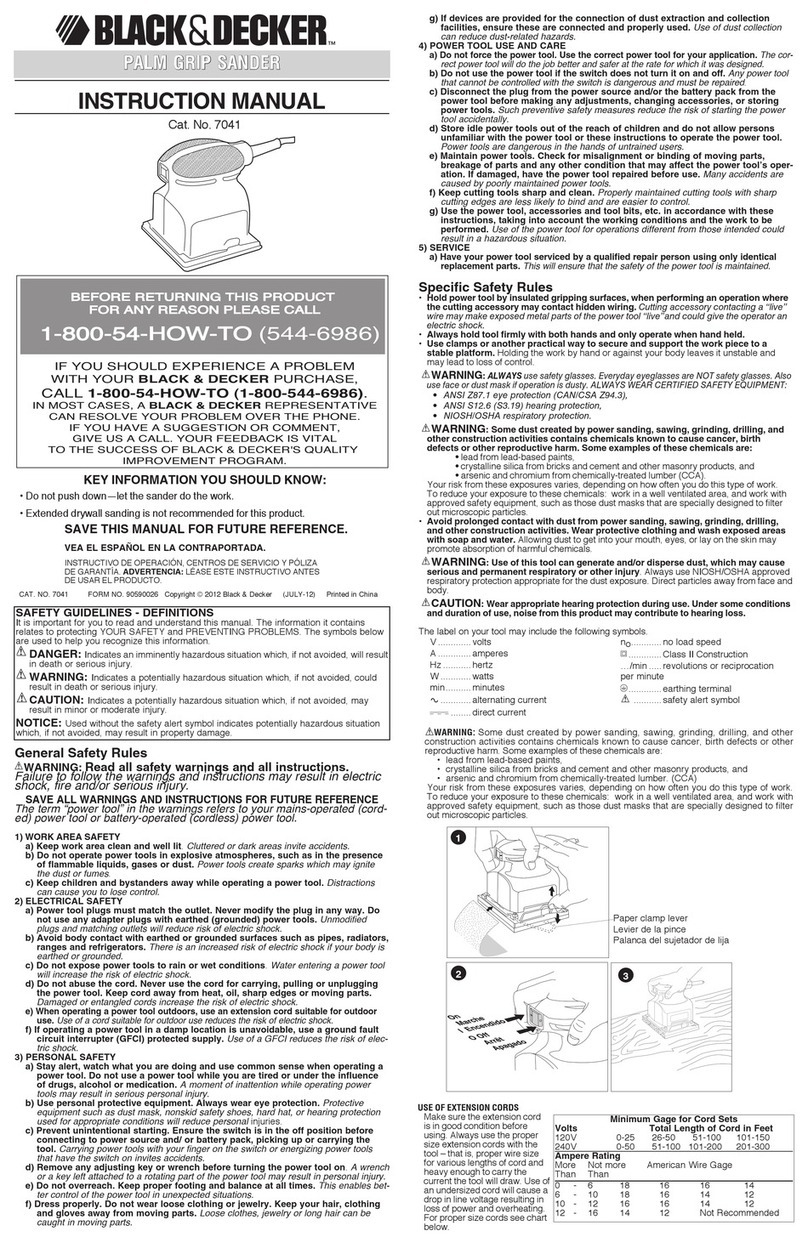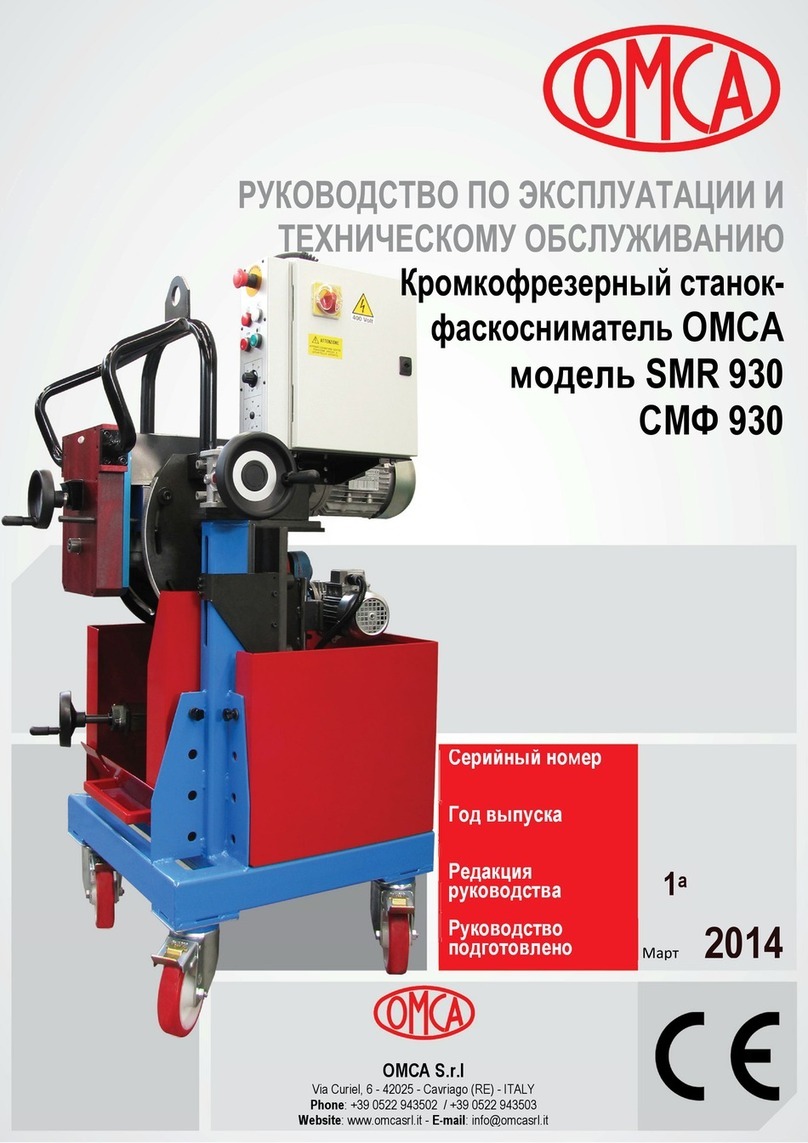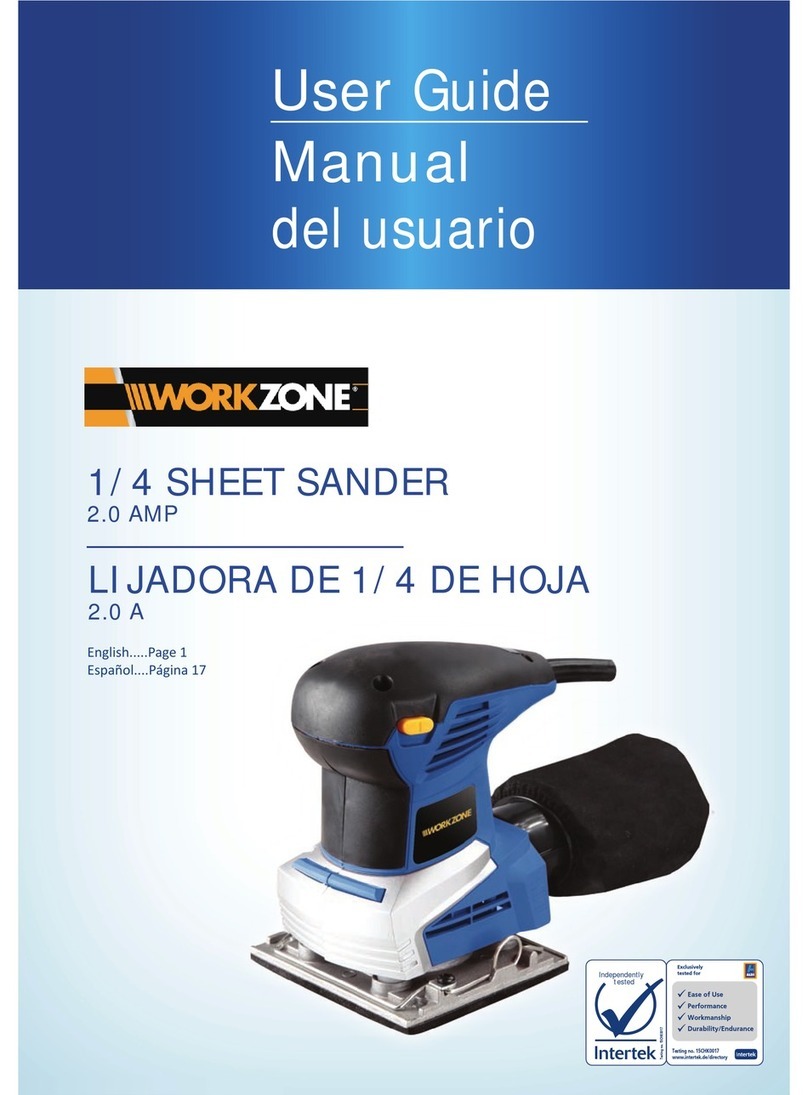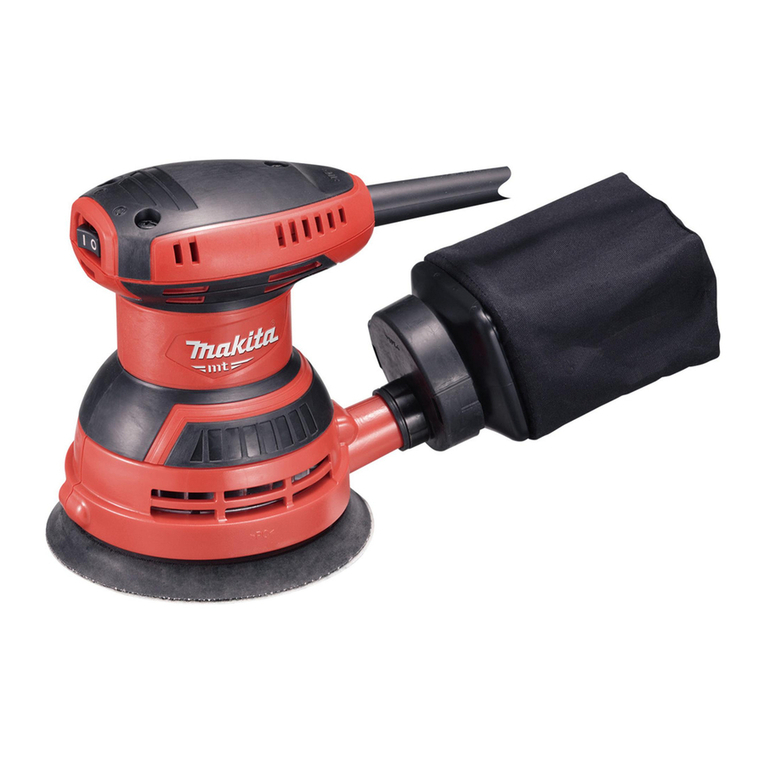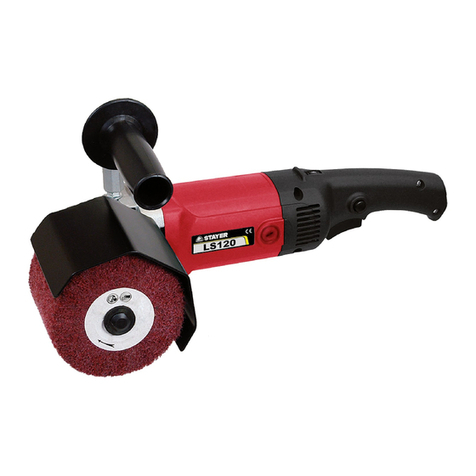2
SPECIFIC SAFETY WARNINGS
3
■Use clamps or other practical way to secure
and support the workpiece to a stable
platform. Holding the work by hand or against
your body leaves it unstable and may lead to
loss of control.
■Hold power tools by insulated gripping
surfaces when performing an operation
where the cutting tool may contact hidden
wiring or its own cord. Contact with a “live”
wire will also make exposed metal parts of the
tool “live” and shock the operator.
■Know your power tool. Read operator’s
manual carefully. Learn its applications and
limitations, as well as the specific potential
hazards related to this power tool. Following
this rule will reduce the risk of electric shock, fire
or serious injury.
■Always wear safety glasses with side
shields. Everyday glasses have only impact
resistant lenses. They are NOT safety glasses.
Following this rule will reduce the risk of eye
injury.
■Protect your lungs. Wear a face or dust mask
if the operation is dusty.
■Protect your hearing. Wear hearing
protection during extended periods of
operation.
■If using an extension lead, ensure that the
male and female plug connection is elevated
and out of the way of any water contact.
It is recommended that the tool always be supplied
via a residual current device with a rated residual
current of 30mA or less.
FITTING THE SANDPAPER
■Ensure the sandpaper is taut on the base with
the edges and dust collection holes evenly
aligned (Fig. 2).
■Do not make any adjustment while the motor is
in motion.
■Always disconnect the electrical cord from the
power source before changing the sandpaper,
brushes, or when working on the unit.
■After use, check your tool to keep it in top
condition.
■Clean out accumulated dust.
■When the carbon brushes are worn to the
standard line, they must be replaced.
SPECIFICATIONS
Power input:
No load speed:
Sanding pad size:
Net weight:
200 W
5,000-10,000 min-1
90 x 184 mm
1.75 kg
OPERATION
OPERATION
MAINTENANCE
Now that you have purchased your tool, should a
need ever exist for repair parts or service, simply
contact your nearest Ryobi Authorised Service
Centre or other qualified service organisation. Be
sure to provide all pertinent facts when you call or
visit.
SERVICE
■Pull out both the front and rear clamping levers
to the open position and insert the ends of the
sandpaper under both clamps. (Fig.3)
■Ensure that the sandpaper is taut on the base.
■Push both clamps in to the closed position to
secure the sandpaper. (Fig.4)
VARIABLE SPEED CONTROL (Fig.5)
The variable speed control wheel is used to
programme the required sanding speed. In this way
the speed can be adapted to match the material
being worked.
■Turn the wheel to the right to increase the speed.
■Turn the wheel to the left to decrease the speed.
SANDING
■Your sander starts and stops by depressing and
releasing the trigger switch. (Fig.6)
WARNING:
Never cover the air vents. They must be
open at all times for proper motor cooling.
WARNING:
Always remove the electric cord from the
power supply when changing sanding paper,
polishing pad or when working on the tool.
WARNING:
This sander is designed for light consumer
use. It is NOT designed for trade or industrial
use and is not covered by the guarantee for
use in these applications.
WARNING:
Make sure the workpiece is free of nails and
foreign objects which could tear the sanding
paper.
■For continuous operation, press the lock-on
switch while the trigger is depressed. Depress
the trigger switch to release the lock (Fig.7).
■Move the sander evenly over the entire work
area. (Fig.8) The weight of the sander alone is
sufficient for normal use. Any excess pressure
will retard the sanding action, giving an uneven
finish and cause extra wear to both tool and
sanding paper.
■Never allow sander to stay in one place too
long, or excessive material will be removed.
Always start sander before applying it to the
work piece.
■The sander should never be turned off while
resting on the work piece. Lift the tool from
workpiece and then turn it off. Do not use the
tool without sanding paper, or the rubber pad will
be damaged. Take care that your hand does not
cover the vents and make sure oil or water does
not come into contact with the motor.
DUST COLLECTION BOX
■Your sander is equipped with a dust collection
box. To attach, insert the box into the back of the
sander. (Fig.9)
■To empty the dust box, remove the box from the
sander.
d) Store idle power tools out of the reach of
children and do not allow persons
unfamiliar with the power tool or these
instructions to operate the power tool.
Power tools are dangerous in the hands of
untrained users.
e) Maintain power tools. Check for
misalignment of binding or moving parts,
breakage of parts and any other condition
that may affect the power tools’ operation.
If damaged, have the power tool repaired
before use. Many accidents are caused by
poorly maintained power tools.
f) Keep cutting tools sharp and clean.
Properly maintained cutting tools with sharp
cutting edges are less likely to bind and are
easier to control.
g) Use the power tool, accessories and tool
bits etc., in accordance with these
instructions, taking into account the
working conditions and the work to be
performed. Use of the power tool for
operations different from those intended
could result in a hazardous situation.
5) Service
a) Have your power tool serviced by a
qualified repair person using only
identical replacement parts. This will
ensure that the safety of the power tool is
maintained.
GENERAL POWER TOOL SAFETY WARNINGS
